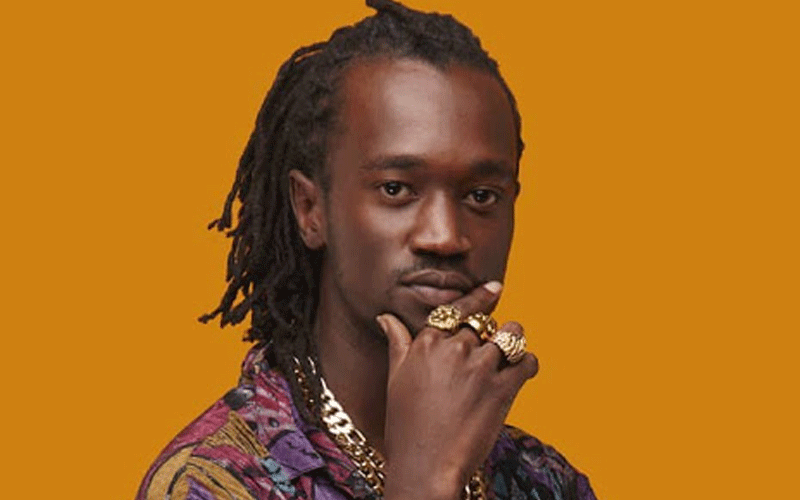Drill Music, the new genre that’s kicking out Gengetone

Music genres will always come and go. And following the ‘success’ of Gengetone, a new genre is threatening to take over the Kenyan music scenes, writes Jackson Onyango.
With rumblings that Gengetone’s best days are behind us already, a new phenomenon from Nairobi’s Eastlands called Drill Music is interrupting the Kenyan music scene.
During the Covid-19 crisis, the age of discovery has never been more alive.
Rapper M1llionz landed in Kenya three weeks ago to shoot his visceral music video for his banger Lagga, and linked up with a number of prospective drill artistes such as Poppa D, GTA crew and Natty, solidifying Kenya as a breeding ground for what is expected to be the hottest music genre in the country in the recent times.
“A drill beat consists of an entirety of dark sounds, with dark minor chords and keys making most of the melodies.
The space in the beat is airy, and filled with heavy hard-hitting and sometimes distorted bass,” producer Topher Bier tells Spice, adding that there’s a heavy foreign influence, notably American and British hip-hop cultures, which has penetrated and fast becoming a dictating force in Nairobi.
He says: “I believe it’s more different compared to here because you will find the sound originating from gang cultures and beefs in the rappers lives.
While in Nairobi it’s more of rappers affiliating with danger-prone neighbourhoods they have grown up in, it’s representative of what is still happening.
It’s an outright lore of gang culture. But it’s obviously less violence than riddled in their raps.”
Kenyan urban music found hope in a genre called Gengetone when it disrupted the existing Afrobeats mania four or so years ago.
Nigerian artistes and music dominated Kenyan airwaves, clubs and pop culture in the last decade.
Ex-Kleptomaniax member Collo went as far as clowning Kenyan artistes for lacking identity and the piggy-back-riding Naija sound.

But pioneering Gengetone artiste David Benzema says the genre “saved” the situation.
The end starts
YouTube streams, public service vehicles, and every platform alternative to broadcast and traditional media all wanted a piece of Gengetone.
Viral hits such as Lamba Lolo, Pekejeng, Wamlambez and Bora Uhai, and artistes such as Boondocks Gang, Sailors and Wakali Wao emerged, seizing the audience to give Kenyan music a much-needed sigh of relief.
The party-ready music and ratchet-filled audio-visuals were Kenya’s reclamation of music in popular culture after being in the shadow of other genres most notably West Africa’s Afrobeats, something even veteran producers such as Eric Musyoka acknowledged in a past interview with Spice.
“Each generation has its own form of expression that an older generation might find difficult to relate to.
Music is a very subjective matter and everyone has their own preference and taste.
You hardly hear Western audiences comparing quality from one generation to another saying one is better than the other.”
He added, “The main reason why I think our audiences are plagued by this comparison mentality is because of the disconnect in audiences from generation to another, and the isolation of audiences along social and economic classes.
Therefore, music is rarely enjoyed as a social medium across generations.”
Four years later, Gengetone has been attacked, trashed, slandered, and faced prohibition by authorities.
Fortunately or unfortunately, everything has an ending. Make no mistake though, the genre is still a mainstay in Kenyan music folklore, seasoned as it was, but the time for a different chapter seems nigh, and Drill Music is about to take the limelight according to Shrap artiste Jovie Jovv.
“I don’t know why it hasn’t dominated yet. We now have a list of artistes who have done it and the reception is slow.
Swahili Papi and myself are working on a Drill tape, trying to shoot some videos.
I’ll release it soon,” says Jovie, who adds that it only takes one hit song for the genre to solidify its place in the Kenya’s mainstream.
New and fresh
With Gengetone deeply associated to Eastlands as the sound of the party culture of the hood, the same Eastlands is again responsible for the innovation of the freshest sound, Drill.
“We have been doing this style since 2015,” says Brown, the CEO of Buruklyn Records, a start-up record label home to hard-spitting artists Mr Right, Ajay and Lui.
“Everything we rap in our songs is part of our lifestyle. We used to freestyle, but never took music seriously.
We were busy hustling. We loved music all the way, and after our first songs Durag and Slice, we started building a fan base in Buru Buru.
People started supporting our tracks on YouTube, and this inspired the start of Buruklunboyz crew,” says Ajay.
From the outside, Drill is a branch of hip-hop that is more cultural than musical.
The artistes are fashionable, enterprising, and gangster-like to complete their life outside of music.
The grim and dark music is just a piece of the puzzle to the young artistes trying to make it out of the hood in pursuit of better lives.
“It’s about being true to yourself and just doing what you relate to. A lot of things we learn in school or on the media isn’t really what it is after growing up. I just want my passion for music to reflect in my songs,” says Poppa D.
With the growth of the Drill scene, it’s worth mentioning that Chicago has it’s own interpretation of it with artistes such as Chief Keef, Lil B and Lil Reese, all leading the charge in the early 2010s.
In UK, an entire do-it-yourself media platform, GRM Daily, was created just to promote Drill music. It is a mainstream sound in UK.
The channel has more than three million subscribers on YouTube alone. Locally, artistes such as Wakadinali have adopted the sound and ditched their original boom-bap rap style for the trendy up-beat Drill sound.












